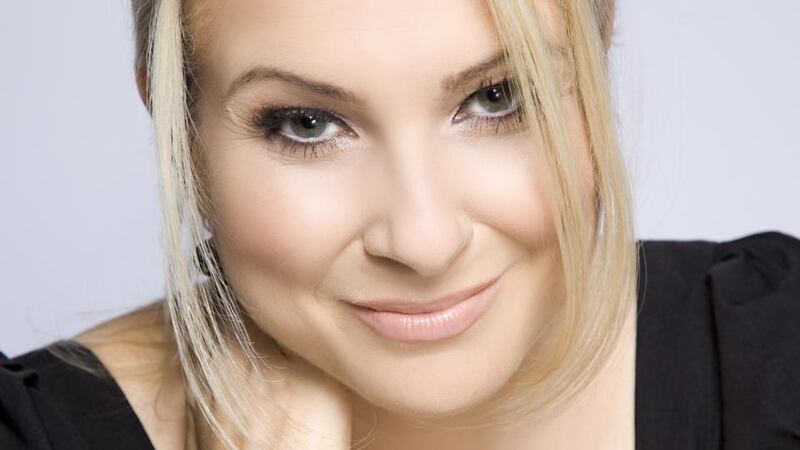Author Anna McPartlin is well known for her novels, but few people are aware of the pain she has suffered for the past two decades and continues to live with on a daily basis.
As one of the 100,000 women affected by endometriosis in Ireland, she is well aware of the need to highlight the condition which can take between seven and nine years to diagnose.
“My problems first manifested when in my early 20s,” says McPartlin, who is now 40. “I began to suffer with kidney and bladder problems and spent a lot of time in and out of hospital undergoing treatment and investigations.

"I have a high pain threshold which people always see as a positive thing but in reality it's dangerous. Pain is a signal something is wrong so by the time I began to register the pain, a lot of damage had been done."
Diagnostic laparoscopy
"From the initial symptoms, it took at least eight years for me to be diagnosed with endometriosis and this only happened due to the influence of my aunt who was a gynaecological nurse and believed my problems sounded like endometriosis.
“She pushed me to move from a kidney specialist to a gynaecologist. And a diagnostic laparoscopy revealed endometriosis on my bladder, uterus, abdominal wall and fallopian tubes.
“The surgeon removed the scar tissue and I experienced about a year of bliss with no bladder issues at all but the only way to stop recurrence is to prevent menstruation and my husband, Donal, and I were trying for children so that was not possible.”
But despite taking precautions in order to help her conceive and feeling much better than she did before diagnosis, McPartlin has not yet become pregnant and says that the fault probably lies with her endometriosis.
“I had a second operative laparoscopy a number of years ago and although my symptoms are ongoing, I am so much better than I was before diagnosis,” she says.
“I have good months and bad months. Sometimes I experience pelvic pain and once in a while I experience bladder pressure or urgency, nausea, dizzy spells and diarrhoea.
“I do get very tired but I’m lucky as a writer I work from home so I can manage my symptoms comfortably when they occur. But I haven’t been able to conceive although my infertility is still in question – one of my specialists believes it’s unlikely I’ll conceive naturally and another still thinks there is a chance. After 10 years of trying, so far the first specialist is proving correct.
"I did one cycle of IVF which was difficult and unsuccessful. I turned 40 in July and my husband and I are happy and content as we are so we've decided to keep trying the natural way while accepting that children are unlikely."
Raise concerns
McPartlin says women should familiarise themselves with the symptoms associated with the condition and if they are experiencing anything similar, should raise their concerns with a medic.
“It’s great that endometriosis is being talked about now and that there are support and network organisations like the Endometriosis Association of Ireland to create awareness and encourage conversation,” she says.
“Before I was diagnosed I’d never even heard of it. So I would say if any of the symptoms I’ve mentioned sound familiar, don’t suffer in silence – talk to your GP and insist on being referred to a specialist.
“The sooner you are diagnosed, the better. Endometriosis is painful, irritating and it can be isolating – but, chin up, there is help out there and it is a manageable condition.”
Consultant gynaecological surgeon at the Galway Clinic Mo'iad Alazzam says despite the difficulty in diagnosing the condition, endometriosis is very common.
“Endometriosis affects an estimated one in 10 women during their reproductive years, irrespective of their ethnic group or social class,” he says.
In Ireland, it affects approximately 100,000 women and it can start as early as a girl's first period while its effect may be observed after menopause.
Hormonal changes
Every month a woman’s body goes through hormonal changes, which cause the lining of the womb to increase in preparation for possible pregnancy. If pregnancy does not occur, then this lining breaks down and bleeds. The blood is then released from the body as a period.
Endometriosis tissues react in the same way; except that they are located outside the womb. Every month, hormones stimulate the endometriosis, causing it to grow, then break down and bleed.
This internal bleeding, unlike a period, has no way of leaving the body. This leads to inflammation, pain and the formation of scar tissue.
It is most commonly found inside the pelvis, around the ovaries, the fallopian tubes, on the outside of the womb and the area between the rectum and the womb. But it is also found on the bowel, the bladder, the intestines, the vagina and the rectum.
In rare cases it may present in other parts of the body such as the spine, the lungs and the brain.
“It is important to remember that all of the mentioned symptoms may be caused by other conditions”, says Alazzam.
“Therefore, it is important to seek medical advice to clarify the cause of any symptoms you may experience. It is easy to attribute all problems to endometriosis but it may not always be the cause.”
If you have any concerns regarding this condition, visit your doctor for advice.
See endo.ie












